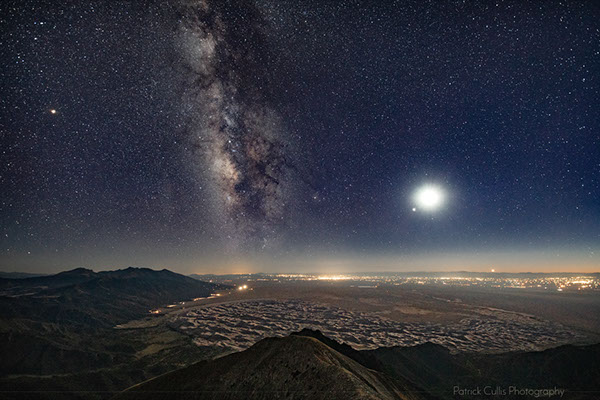Great Sand Dunes National Park and Preserve - Colorado










<
>
High alpine tundra, mountain forest, and the sandy plains of the Alamosa valley. Great Sand Dunes National Park - Colorado2
High alpine tundra, mountain forest, and the sandy plains of the Alamosa valley. Great Sand Dunes National Park - Colorado3
High alpine tundra, mountain forest, and the sandy plains of the Alamosa valley. Great Sand Dunes National Park - Colorado4
High alpine tundra, mountain forest, and the sandy plains of the Alamosa valley. Great Sand Dunes National Park - Colorado5
High alpine tundra, mountain forest, and the sandy plains of the Alamosa valley. Great Sand Dunes National Park - Colorado6
High alpine tundra, mountain forest, and the sandy plains of the Alamosa valley. Great Sand Dunes National Park - Colorado7
High alpine tundra, mountain forest, and the sandy plains of the Alamosa valley. Great Sand Dunes National Park - Colorado8
High alpine tundra, mountain forest, and the sandy plains of the Alamosa valley. Great Sand Dunes National Park - Colorado9
High alpine tundra, mountain forest, and the sandy plains of the Alamosa valley. Great Sand Dunes National Park - Colorado10
High alpine tundra, mountain forest, and the sandy plains of the Alamosa valley. Great Sand Dunes National Park - Colorado11










Great Sand Dunes National Park photographed from the top of Mount Herard (13,345') I hiked the 5 miles and 3,700 vertical feet from Medano Pass to the top of Mount Herard, arriving just before sunset in September 2018 in order to take these photographs. I was specifically going for the Milky Way shot, which is detailed below, but sunset and dusk blew me away and made the hike totally worth it by itself. The hike back down to my campsite close to Medano Lake was tricky using headlamps in the pitch black, with pathfinding difficult. In daytime the upper portion is clear, but in the dark it is precarious on the eastern edge of the ridge and there is no clear path to follow until the lower portion.

I approached the pass from Westcliffe to the east. Once leaving CO-69, there is a 7-mile section of light washerboard passing through the gigantic Wolf Springs Ranch private property. Eventually though, it leads to National Forest and the final 2.5 miles of steep 4WD road. My Tacoma handled it well, but if you continue west in to the park, there are some serious sections. Be prepared... Half a mile past the top of Medano Pass when crossing from the east is the Medano Lake trailhead. From there, the hike is 5 miles and ~3,700 vertical feet to the top of Mount Herard.
Video of the hike to the summit of Mount Herard.
Profile of the hike to the top of Mount Herard. The first half was a steady, reasonable climb, but the second half was a steep slog without a clear path other than "up".

For three years after I first saw photos from this spot, I knew that I wanted to photograph the Milky Way from here. I planned out the shoot on graph paper so I could easily time reference the position of the Milky Way and position of the moon within the scene. My photographs primarily rely on clear skies, the position and phase of the moon, and the position of interesting astronomical features. I use a combination of Google Earth Pro, Photo Pills App, WolframAlpha, and the Canadian Astronomy Cloud Forecast. The easiest astronomical object to predict is the Milky Way and background stars because they simply move 4 minutes ahead each night because of the orbit of the Earth around the Sun. The planets wander around, but I typically mark interesting conjunctions on my calendar ahead of time. The moon is a bit more difficult, but there are really only four or five nights a month where the phase of the moon is ideal for most single-exposure landscape astro-photography.


Milky Way and Four Planets over the Sand Dunes. This image is a single 20-second exposure and includes Mars, the Milky Way, Saturn, Jupiter, the Moon, and Venus in the sky above the Sand Dunes. It was edited using Adobe Lightroom CC. Although it looks like a bright, full moon in the photograph, exposing the image for the sand dunes and the milky way blows out the 22% waxing crescent moon. As a light source, I have found that in clear, dark skies, a moon between 20% and 35% is just about perfect for exposing the landscape at the same brightness as the night sky. Too much moon and you will lose the milky way and only see the constellation stars. Too little moon and the landscape will be black compared to the sky and you will need to instead do composite photography. I have no problem with composites, and actually do them quite often with my telescope tracking mount in order to capture more beautiful small aperture stars, but every once in a while I use planning and perfect timing to get what I want with only one flip of the mirror.
Canon 1Dx mark ii w/ Sigma 14mm f/1.8 Art @ 20 seconds - f/2.5 - ISO 1600









